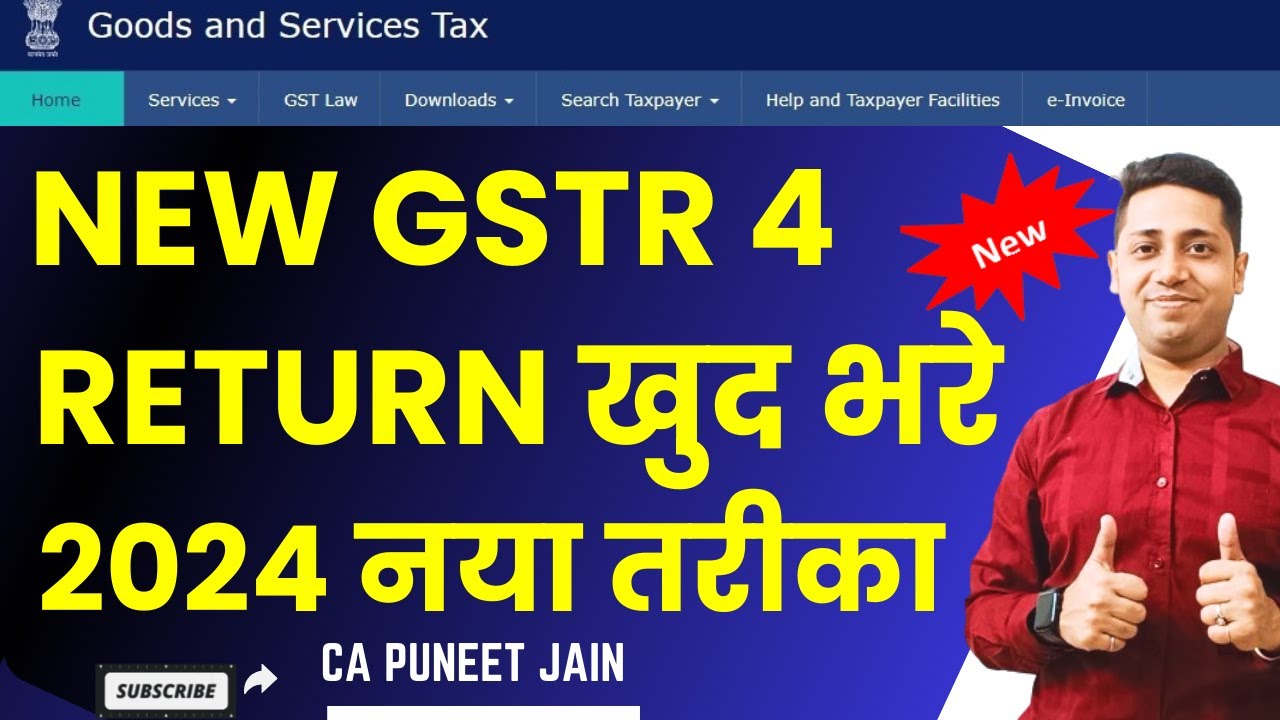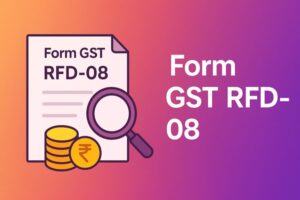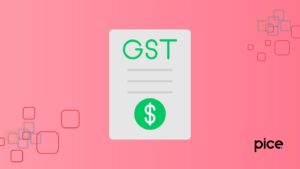A Complete Guide on GSTR 4 Annual Return
- 20 Mar 25
- 8 mins
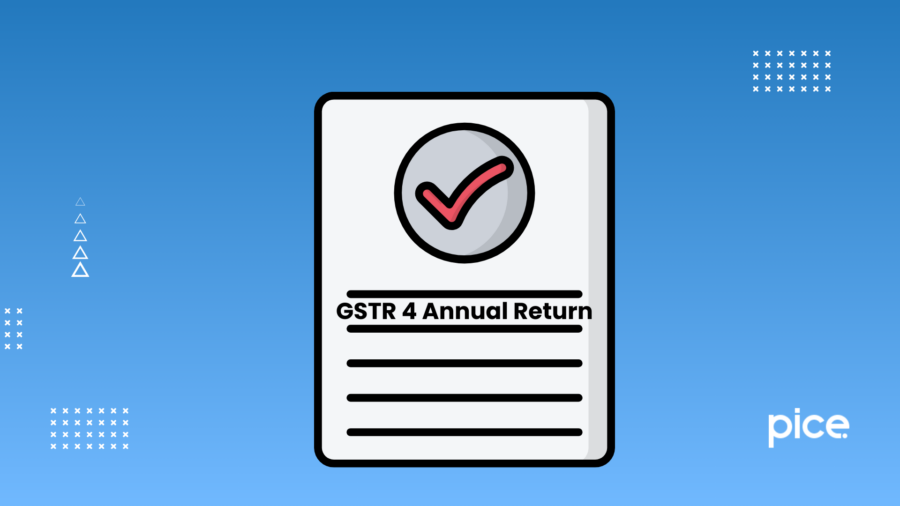
A Complete Guide on GSTR 4 Annual Return
- What Is GSTR 4 Annual Return?
- When Is the Due Date to File GSTR-4 Annual Return?
- Who Must File GSTR-4 Annual Return?
- Eligibility Criteria for GST's Composition Scheme
- Sections in Form GSTR-4
- Steps in Filing Form GSTR-4
- GSTR 4 Interest on Late Payment
- Difference Between Form GSTR-4 and Form GSTR-4A
- Conclusion
Key Takeaways
- Annual Filing – Composition taxpayers must file GSTR-4 by April 30 (proposed extension to June 30 from FY 2024-25).
- Quarterly Tax Payment – Taxes are paid via CMP-08 every quarter before filing GSTR-4.
- Late Fee & Penalty – ₹50/day (max ₹2,000) for late filing; ₹500 max for nil tax liability.
- Eligibility Limits – Inter-state traders, e-commerce sellers, and certain manufacturers are ineligible.
- No ITC or Tax Collection – Composition dealers can’t claim ITC or charge GST on sales.
Business entities registered under the GST composition scheme must file the GSTR-4 annual return, which is designed for small taxpayers. Unlike regular GST payers who submit multiple monthly returns, composition dealers file GSTR-4 on a quarterly basis, with the deadline set for the 30th of the last month in each quarter.
Additionally, they must submit the GSTR-9A on an annual basis by December 31 of the following financial year. This guide explains everything you need to know about GSTR 4 Return, including filing return procedures, deadlines, and key requirements.
What Is GSTR 4 Annual Return?
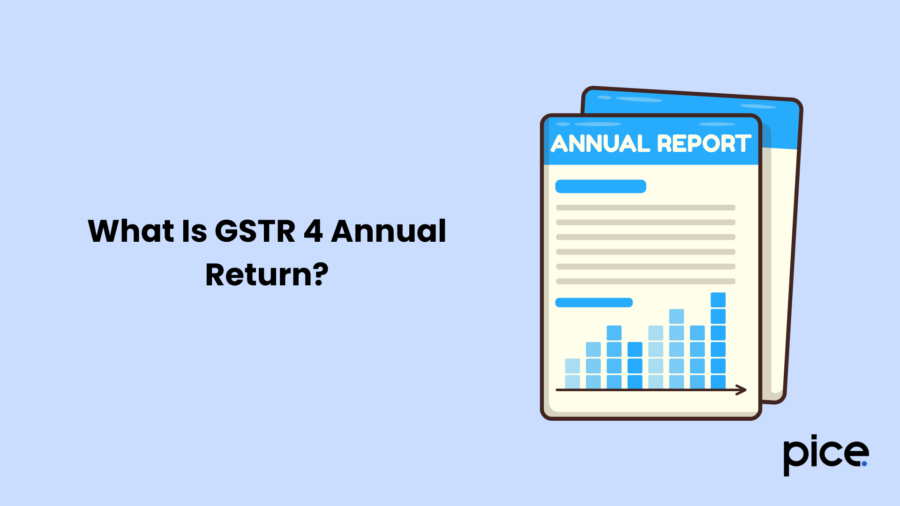
GSTR-4 is a tax return that composition dealers must file annually. Unlike regular taxpayers, who need to submit two monthly returns and an annual return (with some exceptions), composition scheme dealers are required to file a quarterly return using Form CMP-08 quarterly statements and an annual return through Form GSTR-4. This annual return must be submitted by April 30th of the following financial year.
When Is the Due Date to File GSTR-4 Annual Return?
Every business must file GSTR-4 before April 30th during the following financial year. The deadline to file the GSTR-4 for the financial year 2023-24 required submission by April 30, 2024. Between FY 2018-19 and its preceding period, all types of businesses needed to file their GSTR-4 on the 18th of each month following the quarterly completion.
The GST Council proposed during the 53rd GST meeting to push GSTR-4 filing from April 30th to June 30th of the following financial year, starting from 2024-25. The official announcement of CGST Notification 12/2024 took place on July 10, 2024.
Who Must File GSTR-4 Annual Return?
The filing of GSTR-4 applies to all composition scheme taxpayers without any turnover-based exceptions. The filing of GSTR-4 does not require any restriction based on turnover amount. The special composition scheme for service providers under CGST (Rate) Notification No. 2/2019 from March 7, 2020, appears within GSTR-4.
Eligibility Criteria for GST's Composition Scheme
To qualify for the GST composition scheme, a business must have an annual turnover below ₹1.5 crore. However, businesses operating in Himachal Pradesh or the North-Eastern states must have an aggregate turnover under ₹75 lakh. All businesses linked to the same PAN are considered when determining eligibility for this scheme.
When opting for the composition scheme, the phrase "composition taxable person" must be displayed on all notice boards at the business premises and included on every bill of supply issued.
Businesses engaged in the supply of goods within the same state are eligible for this scheme. However, suppliers can only offer services up to a limit of ₹5 lakh. Composition scheme taxpayers cannot collect composition tax or claim an input tax credit.
Certain businesses and individuals cannot opt for this GST composition plan. These are as follows:
- Regular or non-resident taxable persons
- Service providers (except those in the restaurant sector)
- Businesses supplying goods through an e-commerce platform
- Suppliers of GST-exempt goods
- Businesses involved in inter-state trade
- Manufacturers of tobacco, pan masala or ice cream
- Suppliers of non-taxable goods
For those ineligible for the scheme, tax liability includes the applicable tax amount, along with interest and a penalty equivalent to the unpaid tax.
Sections in Form GSTR-4
The updated annual return form GSTR-4 is divided into 9 sections, each serving a specific purpose:
Tables 1-3: Basic Details
These sections auto-fill a taxpayer’s fundamental details, including name, GSTIN, ARN, ARN date and turnover from the previous financial year.
Table 4: Inward Supplies
This section records different types of inward supplies received from a registered person:
- 4A: Supplies from a registered person without reverse charge
- 4B: Supplies from registered suppliers with reverse charge
- 4C: Purchases from unregistered suppliers
- 4D: Taxable import services under reverse charge
Table 5: Summary of Tax Liability
This table consolidates self-assessed tax details from Form GST CMP-08, covering payments on outward supplies details, import of services, inward supplies under reverse charge, interest and tax amounts.
Table 6: Outward & Reverse Charge Supplies
Composition dealers report outward supplies and inward supplies subject to reverse charge. Tax details such as GST rate applicable and amounts are also included, with IGST, CGST, SGST and Cess auto-filled.
Table 7: TDS or TCS Details
Taxpayers enter the GSTIN of the deductor or e-commerce operator, along with invoice values and deducted TDS amounts. Any auto-deducted TDS/TCS is also reflected.
Table 8: Tax, Interest & Late Fees
This section outlines tax, interest and penalties:
- Tax payable: Auto-fills from Table 6
- Tax paid: Derived from CMP-08
- Balance tax payable: Difference between payable and paid tax
- Interest and late fees: Lists amounts due and paid, with a late fee payable of ₹200 per day (up to ₹5,000)
Table 9: Refund Claims
This section allows taxpayers to claim refunds for any excess tax payments under different categories:
- Tax
- Interest
- Fee
- Penalty
- Other applicable charges
Steps in Filing Form GSTR-4
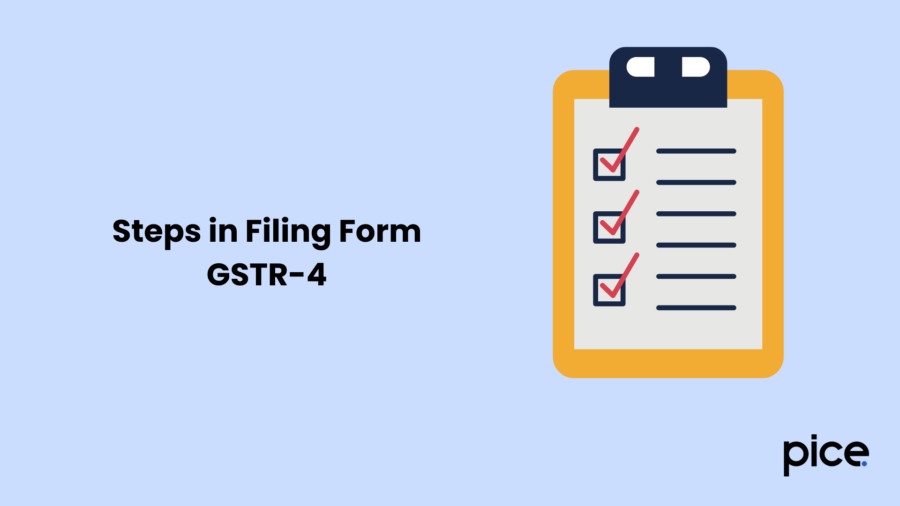
You can file GSTR-4 online through the official GST portal by following these steps:
Step 1: Sign in to the GST portal using your email ID and password.
Step 2: Navigate to ‘Services,’ select ‘Returns,’ and open the ‘Returns Dashboard.’
Step 3: Choose the relevant financial year and filing period.
Step 4: Tap on ‘Prepare Online’ under ‘Quarterly Return GSTR-4.’
Step 5: Answer a set of ‘Yes’ or ‘No’ questions that determine which sections of the return will be displayed. Click ‘Next’ to proceed.
Step 6: Only the sections for which you selected ‘Yes’ will appear. Enter the necessary details for the applicable tax period.
Step 7: Use the ‘Preview’ option to review your inputs and download a summary in PDF format.
Step 8: Click ‘Proceed to File’ to calculate your tax, interest and any late fees.
Step 9: Go to ‘Tables 10 and 11’ to make the necessary tax and fee payments.
Step 10: Submit the return using either ‘File GSTR-4 with DSC’ (Digital Signature Certificate) or ‘File GSTR-4 with EVC’ (Electronic Verification Code).
Once successfully filed, you will receive a confirmation message with an Acknowledgement Reference Number (ARN). A notification will also be sent to your registered email and mobile number and the filing status of GST registration will be updated to ‘Filed.’
GSTR 4 Interest on Late Payment
As per the latest update, the late fee for delayed GSTR-4 return filing is ₹50 per day, capped at ₹2,000. If there is no tax liability, the maximum late fee is ₹500. Earlier, composition taxpayers had to pay ₹200 per day for late filing, with a maximum penalty of ₹5,000.
Difference Between Form GSTR-4 and Form GSTR-4A
The following table shows the difference between the GSTR-4 form and the GSTR-4A form:
| Parameters | GSTR-4 | GSTR-4A |
| Filing Frequency | Filed once a year | Auto-generated, no submission required |
| Purpose | Summarizes outward supplies, tax payments, and ITC reversals | Displays inward supply details from registered suppliers |
| Filing Requirement | Mandatory for businesses under the composition scheme | Automatically generated for reference, no action needed |
| Content | Includes total turnover, tax paid, and invoice details | Lists purchases from GST-registered suppliers |
| Corrections | Modifications can be made in the following year's return | Errors must be reported to suppliers for correction |
| Due Date | April 30 of the next financial year | Not applicable, as no filing is required |
Conclusion
Filing the GSTR-4 annual return is essential for businesses under the composition scheme to stay GST-compliant. It simplifies tax reporting by replacing multiple monthly returns with a single annual filing. By understanding its due dates, eligibility and GST-related processes, you can avoid penalties and ensure smooth business compliance.
💡If you want to streamline your payment and make GST payments via credit or debit card, UPI consider using the PICE App. Explore the PICE App today and take your business to new heights.







